
CARDIOVASCULAR AND INTERVENTIONAL RADIOLOGY
Scope & Guideline
Transforming Knowledge into Practice in Cardiology
Introduction
Aims and Scopes
- Minimally Invasive Techniques:
The journal extensively covers studies on minimally invasive procedures, such as percutaneous ablation and transcatheter embolization, which are gaining prominence for their effectiveness and reduced recovery times. - Oncological Interventions:
A significant focus on the use of interventional radiology in cancer treatment, including radioembolization and chemoembolization, highlights its role in managing hepatic malignancies and other tumors. - Technological Innovations:
The incorporation of advanced imaging techniques, such as CT and MRI guidance, along with robotic assistance and AI applications, is frequently examined to enhance procedural accuracy and patient safety. - Patient Outcomes and Quality of Life:
Research often evaluates the long-term outcomes and quality of life impacts of various interventional radiology techniques, providing essential insights into their effectiveness and patient satisfaction. - Complication Management:
The journal addresses the management of complications associated with interventional procedures, including vascular access challenges and post-procedural care. - Multidisciplinary Approaches:
It emphasizes collaborative approaches involving various medical specialties to optimize patient management, particularly in complex cases requiring a team-based strategy.
Trending and Emerging
- Integration of Artificial Intelligence:
The use of AI in procedural planning and outcome prediction is gaining traction, with studies exploring how machine learning can enhance decision-making in interventional radiology. - Robotics in Interventional Procedures:
The application of robotic systems in interventional radiology is an emerging theme, showcasing innovations aimed at improving precision and reducing operator fatigue during complex procedures. - Emphasis on Patient-Centered Care:
There is a growing focus on research that evaluates patient-reported outcomes and quality of life following interventional procedures, highlighting the importance of patient satisfaction in treatment planning. - Hybrid Techniques and Multidisciplinary Approaches:
The trend towards hybrid techniques that combine various modalities (e.g., combining surgical and interventional approaches) is on the rise, reflecting a shift to more comprehensive treatment strategies. - Radiomics and Personalized Medicine:
Research exploring radiomics—analyzing imaging data to predict treatment responses—is emerging as a significant area, aimed at tailoring individualized treatment plans based on patient-specific characteristics.
Declining or Waning
- Traditional Surgical Techniques:
There is a noticeable reduction in studies focusing on traditional surgical methods as interventional radiology techniques become more favored for their minimally invasive nature and lower complication rates. - Single-Center Studies:
A decline in the publication of single-center studies indicates a shift towards multicenter collaborations, which are increasingly valued for their broader applicability and statistical power. - Basic Science Research:
Research with a purely basic science focus, such as fundamental studies on imaging techniques without clinical application, appears to be waning in favor of clinically relevant studies that demonstrate direct patient impact. - Educational and Training Articles:
There has been a decrease in articles specifically focused on training methodologies for interventional radiology, possibly due to a shift towards more integrated education approaches within broader medical training programs.
Similar Journals

Radiologie
Exploring the Future of Radiology and Nuclear MedicineRadiologie, published by SPRINGER HEIDELBERG, is an emerging journal dedicated to the fields of radiology, nuclear medicine, and imaging. With an ISSN of 2731-7048 and E-ISSN 2731-7056, this journal does not currently offer open access, providing a traditional yet respected platform for scholarly communication. Founded in 2022, it aims to advance the understanding of cutting-edge imaging techniques and their applications in clinical practice, contributing to improvements in diagnostic accuracy and patient care. Despite its recent establishment, Radiologie is positioned within the Q4 quartile category, reflecting its developing presence in the academic landscape, with a current Scopus rank of #231 out of 333 in its category. The journal serves as a vital resource for researchers, professionals, and students seeking to stay abreast of the latest developments in radiological science, imaging technology, and their clinical implications, ensuring ongoing engagement and advancement in this critical area of healthcare.
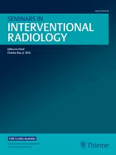
SEMINARS IN INTERVENTIONAL RADIOLOGY
Bridging Theory and Practice in Cardiovascular MedicineSEMINARS IN INTERVENTIONAL RADIOLOGY, published by Thieme Medical Publishers Inc, is a pivotal peer-reviewed journal in the fields of interventional radiology, cardiology, and cardiovascular medicine. With a legacy spanning from 1984 to 2024, this journal serves as an essential resource for professionals seeking to advance their understanding of minimally invasive procedures and imaging techniques. Although it operates under a non-open access model, SEMINARS IN INTERVENTIONAL RADIOLOGY is committed to disseminating high-quality research and clinical insights, thus contributing to ongoing developments in effective medical practices. It enjoys a respectable position within the academic community, indicated by its 2023 rankings of Q3 in both cardiology and radiology categories, reflecting its relevance and influence in the respective fields. This journal not only addresses current trends and challenges but also aims to foster collaboration among researchers and clinicians, emphasizing the importance of evidence-based practices in improving patient outcomes.

CVIR Endovascular
Bridging Clinical Practice and Imaging Techniques for Better OutcomesCVIR Endovascular is a pioneering journal published by SPRINGERNATURE, dedicated to advancing the fields of cardiology, cardiovascular medicine, and radiology. Established as an Open Access platform since 2018, this journal has become increasingly pivotal for disseminating high-quality research that bridges clinical practice and innovative imaging techniques. With a robust focus on minimally invasive therapies and advancements in endovascular procedures, CVIR Endovascular serves as an essential resource for researchers, professionals, and students alike. The journal is indexed in key databases and holds notable rankings within its categories, specifically achieving Q3 quartile status in both Cardiology and Cardiovascular Medicine and Radiology for 2023. This positions it as an influential publication in the ever-evolving landscape of cardiovascular research. As it converges through the years from 2018 to 2024, CVIR Endovascular continues to strive for excellence, aiming to provide a platform for innovative findings and best practices that can enhance the future of endovascular care.
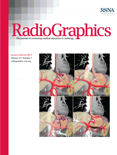
RADIOGRAPHICS
Transforming Radiological Practices through KnowledgeRADIOGRAPHICS, published by the Radiological Society of North America (RSNA), is a premier academic journal dedicated to the field of radiology, nuclear medicine, and imaging. With an impressive impact factor and recognition in the top quartile (Q1) of both Medicine (miscellaneous) and Radiology, Nuclear Medicine and Imaging categories, RADIOGRAPHICS stands out as a leading platform for disseminating high-quality research and clinical findings. Since its inception in 1985 and projected to run until 2024, the journal has consistently provided essential insights into cutting-edge imaging techniques and advancements in radiological practices, making it invaluable for professionals, researchers, and students alike. Although it does not offer open access, the journal continues to flourish with a robust reputation, ranked 35th in its field according to Scopus, placing it within the 89th percentile of its category. With an unwavering commitment to enhancing the understanding and application of radiological sciences, RADIOGRAPHICS remains a pivotal resource for advancing knowledge and expertise within the medical community.

Indian Journal of Radiology and Imaging
Fostering Collaboration in the World of Imaging ScienceThe Indian Journal of Radiology and Imaging, published by THIEME MEDICAL PUBL INC, is a prominent open-access journal in the field of radiology, nuclear medicine, and imaging. Since its inception in 1984, the journal has provided a platform for researchers, professionals, and students to disseminate innovative research and findings in diagnostic imaging. With a growing impact factor and categorized in the Q3 quartile according to the 2023 rankings, it ranks among the notable journals in its field, although it currently stands at Rank #244 out of 333 within Scopus, reflecting its competitive position in radiology research. The journal, accessible to a global audience since 1999, aims to advance the knowledge and practice in imaging by inviting diverse contributions, including original research articles, reviews, and case reports. Its commitment to open-access publication fosters wider dissemination and collaborative discourse, crucial for the dynamic landscape of medical imaging.

Iranian Journal of Radiology
Commitment to Excellence in Diagnostic Imaging ResearchWelcome to the Iranian Journal of Radiology, a pivotal platform dedicated to advancing the field of radiology, nuclear medicine, and medical imaging. Published by BRIEFLAND, this journal aims to disseminate high-quality original research, reviews, and clinical studies that contribute substantially to the global scientific community. Established in 2008 and spanning until 2024, the journal provides an essential archive of knowledge in a rapidly evolving discipline. Although it currently holds a Q4 quartile ranking in the 2023 Scopus metrics, it serves as an important resource for both emerging and established researchers looking to submit their work. Located in the Netherlands, the journal is committed to open dialogue and collaboration amongst professionals in the field, reflecting its accessibility and relevance to both practitioners and academics. With its continued growth and commitment to quality, the Iranian Journal of Radiology is poised to enhance understanding and innovation in diagnostic imaging.
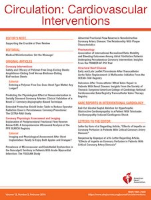
Circulation-Cardiovascular Interventions
Shaping the Future of Cardiovascular Care Through Research.Circulation-Cardiovascular Interventions, published by LIPPINCOTT WILLIAMS & WILKINS, is a premier journal in the field of cardiology and cardiovascular medicine, recognized for its commitment to advancing the understanding and treatment of cardiovascular diseases. With a robust Impact Factor and ranking in the top 10% of its category, it serves as an essential resource for researchers, clinicians, and students seeking to stay at the forefront of cardiovascular intervention developments. This esteemed journal covers a range of topics, including innovative therapeutic strategies, cutting-edge clinical trials, and comprehensive reviews that inform clinical practice and influence guidelines. Since its inception in 2008, and extending through 2024, Circulation-Cardiovascular Interventions has published pivotal research that shapes the landscape of cardiovascular care in the United States and beyond. Its commitment to high-quality publications makes it an invaluable platform for sharing knowledge and fostering collaboration within the global medical community.
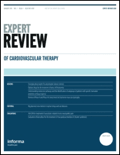
Expert Review of Cardiovascular Therapy
Innovating the Future of Cardiovascular MedicineExpert Review of Cardiovascular Therapy is a leading academic journal published by TAYLOR & FRANCIS INC, focusing on innovative and impactful research in the field of cardiovascular medicine. With an ISSN of 1477-9072 and an E-ISSN of 1744-8344, this journal serves as an essential resource for researchers, clinicians, and educators, offering a platform for the dissemination of critical advancements in cardiovascular therapy and internal medicine. Since its inception in 2003, the journal has maintained a reputable standing with a Q2 ranking in various categories including Cardiology and Cardiovascular Medicine, reflecting its influence and rigor in the field. The journal, which is based in the United Kingdom, does not currently offer Open Access options, ensuring that its content is accessible primarily to subscribers. With its commitment to high-quality, peer-reviewed articles, Expert Review of Cardiovascular Therapy is dedicated to bridging the gap between experimental research and clinical application, thereby enhancing patient care and therapeutic outcomes in cardiovascular health.

Diagnostic and Interventional Radiology
Advancing Radiology: Bridging Knowledge and InnovationDiagnostic and Interventional Radiology, published by the Turkish Society of Radiology, is a renowned open-access journal dedicated to advancing the fields of radiology, nuclear medicine, and imaging. With its transition to open access in 2022, the journal aims to foster knowledge dissemination and accessibility for researchers, healthcare professionals, and students alike. This esteemed publication, indexed in Scopus, features a robust editorial board and peer-reviewed articles that contribute significantly to the body of work in cardiology, radiology, and related disciplines. The journal currently holds a significant position, reflected in its Category Quartiles ranking—Q2 in Radiology, Nuclear Medicine, and Imaging, and Q3 in Cardiology and Cardiovascular Medicine, highlighting its relevance and impact in these critical medical fields. Research published in this journal is vital for evolving diagnostic and interventional techniques, clearly situating it as a key resource for those seeking to stay at the forefront of radiological science.
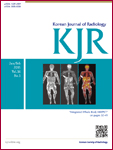
KOREAN JOURNAL OF RADIOLOGY
Unveiling Insights in Medical ImagingKorean Journal of Radiology (ISSN: 1229-6929, E-ISSN: 2005-8330), published by the Korean Society of Radiology, stands as a leading international platform for the dissemination of high-quality research and advancements in the fields of radiology, nuclear medicine, and imaging. With a remarkable impact factor and ranked in the Q1 quadrant in its category, this journal showcases cutting-edge studies, clinical investigations, and comprehensive reviews that significantly contribute to the understanding and practice of medical imaging. Researchers, clinicians, and students alike will find the journal an invaluable resource, featuring innovative methodologies, case studies, and essential updates in imaging technology. Since its inception in 2000 and continuing through 2024, the Korean Journal of Radiology remains dedicated to promoting excellence and fostering collaborative research within the global radiology community, underscoring the importance of imaging in modern medicine.